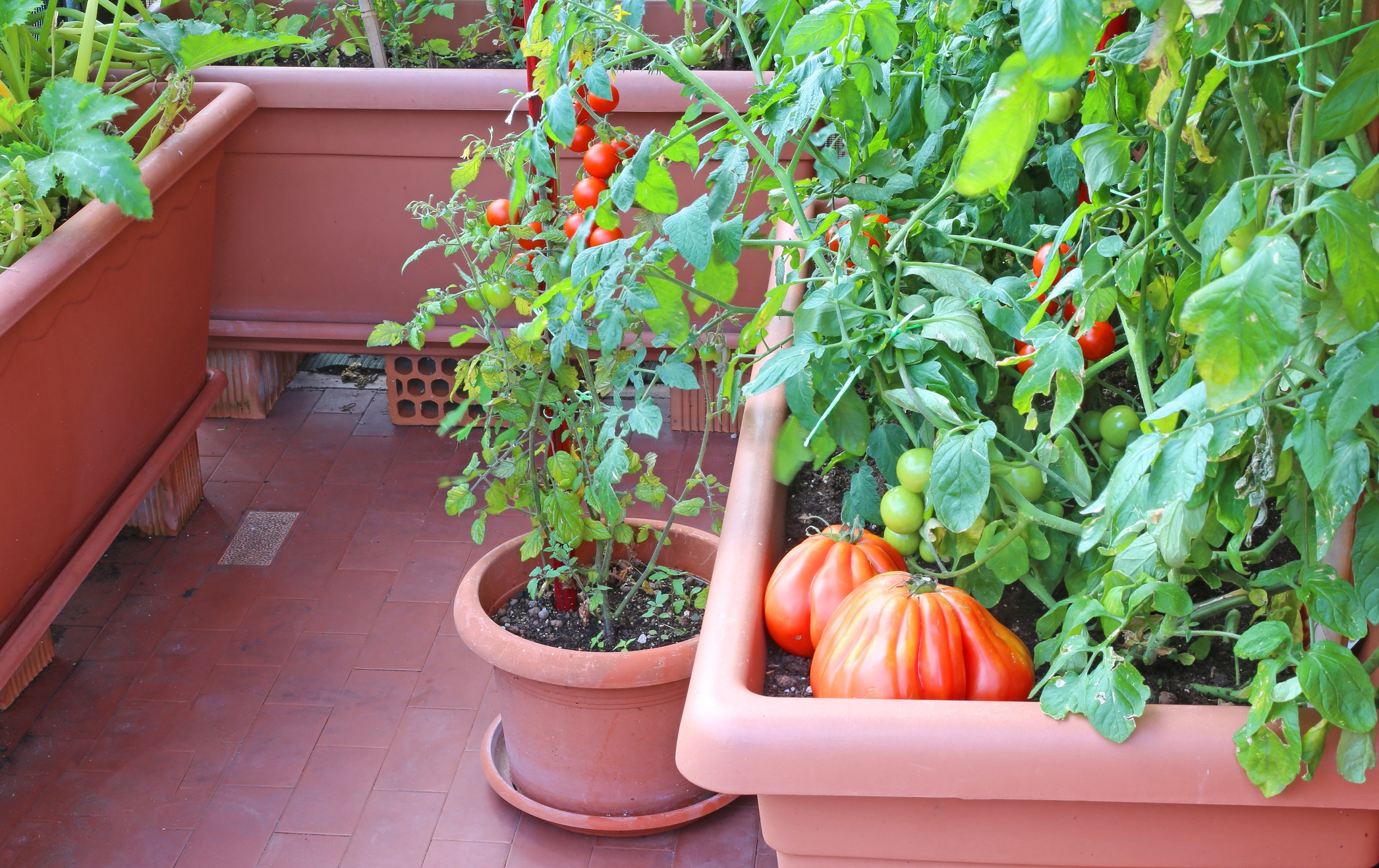Create your own Vegetable Container Garden
It is easy to grow most vegetables in containers. So, if you live in an apartment or have less space for garden but would love to grow your own vegetables, go for a Vegetable Container Garden and harvest your own fresh, home-grown vegetables.
Pick a sun spot
- Vegetables need at least six hours of direct sunlight. Plants like tomatoes and peppers stay disease-free in open spaces with good air circulation. So, pick a sunny, well-ventilated spot in your home to create your vegetable container garden.
- Vegetable plants thrive best near south-facing walls in cold climates. In hot places, avoid placing pots on cemented floors as it can get too hot.
- Plan a mobile garden by attaching casters to containers so that you can move them to different locations depending on the conditions.

Green leaves of young seedlings of peppers and tomatoes in containers.
Container concepts
- Containers should be large enough to hold the plant. The bigger the pot, the better the growth.
- Drainage holes are a must for containers. If they do not have holes, drill holes in the bottom and sides. Line the bottom with a screen or porous cloth.
- Ideally, containers must be at least 10” wide and 12” deep.
- You can use large flowerpots, small barrels, baskets, window boxes and buckets as containers.
- Use containers with larger diameters, such as 16” for peppers and 20” for tomatoes and cucumbers.
- Tall plants and vines need a support to grow. You can place a wire cage or trellis in the container during planting.
- Terracotta pots need more watering as they are porous.
- Avoid dark containers as they absorb heat and make the soil too warm for the plants, especially if you live in hot places.
Choosing soil
- Potting soil is important.
- Choose a good potting mix from a nursery for use in large containers.
- You can make your own potting mix with equal parts of peat, potting soil, sand or any other porous material, and vermi-compost.
- Fill containers up to 2” from the rim.

Plant setting
- Choose seeds or saplings depending upon the type of plant you want to grow.
- You can grow your own saplings in little pots for transplanting.
- You can start your vegetable container garden with seeds of beans, carrots, radishes and spinach.
- Before planting, water the container soaking the potting mix thoroughly and wait till the excess water drains off.
- Plant more seeds than necessary because not all will germinate.
- After planting the seeds or transplants, water gently.
- Mulch with straw compost, crushed leaves, coco peat etc., to help the soil hold water.
Care and maintenance
- Regular watering is a must.
- Always ensure the potting mix has not gone dry.
- Install a drip-irrigation system if you cannot water regularly.
- Once a week, enrich the soil with a water-soluble fertilizer or food pellets.
- Watch out for pests and weeds. Remove weeds or plants affected by diseases or insects immediately. Fortunately, container plants are not susceptible to diseases like garden plants.
- At the end of the season, remove the soil from the containers and add to your home compost. Scrub the containers well and dry for the next season.
Enjoy your container vegetable garden and reap rich harvests. Early and frequent harvesting will keep the plants more productive.













































